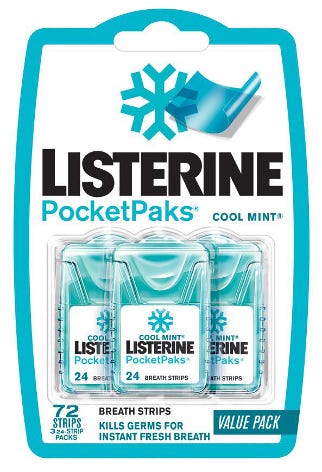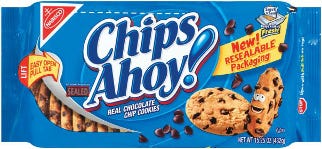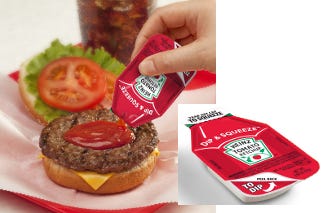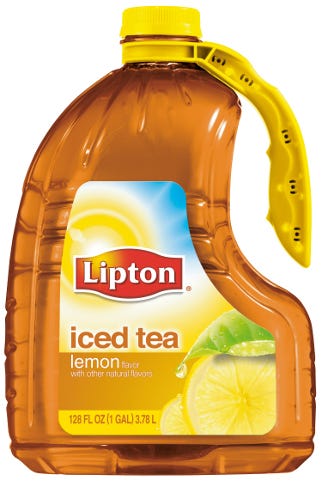Packaging Trends 2011
Great minds don't always think alike. That's how we get different ideas to build on—like these from a top-notch panel of packaging experts from some of the leading companies in the world: Procter & Gamble, Kraft, PepsiCo, ConAgra, Pfizer, H.J. Heinz and Stryker Orthopaedics.
Packaging Digest, along with our sister publication Pharmaceutical & Medical Packaging News, assembled a panel of thought leaders for a "Meet the Press" style session at Pack Expo 2010. At this standing-room-only event, these packaging vps and directors talked candidly about the top trends in packaging for the coming year.
Let's listen in ...
Packaging Trends 2011
PD: What are the top packaging trends at your company today?
Rob Weick: One of the trends is bringing the industry together as we approach sustainability and find the necessary solutions out there. That'll be a focus from my standpoint.
Mike Okoroafor: I am really focused on things that will drive our brand value to the next level. If we want to win, we're going to have to think about ways of collaborating to make sure that we have scale, efficiencies and innovative designs that will really make it worthwhile for the consumer.
Joe Keller: The biggest trend, if I had to pick one, is efficiency and doing more with less. Efficiency on cost and value to the consumer are key for me, as well as sustainability.
Denise Lefebvre: One of the trends coming is called "Surprising Value." It encompasses the economy and sustainability and things like that. But it's really, today, an affordable package in emerging markets and in developed markets.
Consumers sacrifice. They sacrifice on quality. They sacrifice on the brand experience, most of the time. It's incumbent on us to dig deep and advance design, materials manufacturing and value engineering through all of our processes moving forward.

Packaging Trends 2011
Rich Hollander: If I had to pick one trend, I'd say, how do you manage complexity, sustainability and innovative package designs that add value to the patient in an environment that has tremendous cost pressures downward? It's not an easy thing to do.
My job is all driven by innovation. Innovate to manage complexity, to find new technologies that will help with the sustainability equation, to find ways that will help us manage costs and execute our business fundamentals.
Packaging Trends 2011
Sarah Grare: What's unique about packaging for medical devices is that the end user or the patient never sees your package. They don't interact with it and they don't handle it. Our customer is the surgeon. But in most cases, it isn't the surgeon who opens the package. It's the scrub nurse or someone else in the operating room, so some of our challenges are a bit different.
What do you need to do to better design a product that fits within the surgical theater a little bit better? We've got nurses who look to the consumer goods market and say "Why can't your package do this?"
Perfecto Perales: One of the challenges that we have, in addition to complexities in sustainability and challenges with costs, is how do you drive that insight for your consumers across the world? We try to look at it from the broad view—the one of open innovation. The premise starts with this: We all have the same pressures from a cost standpoint. Sustainability has helped us address some of those costs, as well as bring in innovation.
But the question of how do you bring innovation forward is really one of the dilemmas that we face. Open innovation is the key because everyone brings something to the party.
PD: Joe said it concisely, do more with less. What ideas or advice do you have on that?
Okoroafor: How do you do more with less? One way is collaborating through open innovation, where a common technology platform can then pass into different areas of the packaging world: beverages, foods, pharmaceuticals.
Open innovation isn't about you winning it alone. No. It's about taking technologies that already exist and translating them into an application you can use for your product to be not just innovative, but cost-effective.
Perales: Let me throw a spin on this. To me, it's not about doing more with less. It's doing more with more. In North America, our biggest challenge is the value of our brands at the retail store. That's true in any recession. But what that does is, it actually creates an opportunity to up your game and bring more innovation in.

Packaging Trends 2011
I'll give you an example. The Snack 'n Seal package cost us significantly more for the packaging material and equipment. Who here knows the Oreo brand? Anyone? (laughs)
We put in a pressure-sensitive adhesive, working with the packaging supplier, to create a win for consumers. And that's not about more with less. That's about more with more—to bring out innovation to shift how consumers interact with your products.
Weick: I would build on that. Suppliers in the industry have been stripped down in their research capabilities and their resources just as we have. It's essential that you create the partnerships and alliances to drive how we get products to market.
Packaging Trends 2011
At ConAgra, I have some passionate people who work in my organization and they've done some great things, bringing post-consumer recycled CPET into our marketplace. Those are not things that ConAgra had the total exclusivity in the industry. Collaboration is an opportunity to help commercialize the technologies with partners. It's extremely important in these times to drive the sustainability side of things in the marketplace and create that scope that actually gets us to a lower cost.
PD: A couple of you have used the term "open innovation." What is that?
Okoroafor: Open innovation is about looking beyond the traditional places, leveraging the expertise and skills that exist that you don't have in house. The era of "Eureka!" innovation is gone.
Another thing: Technologies don't begin and end in North America. Technology's everywhere. And, these days, the world is flat. So we apply technology from every place.

Packaging Trends 2011
That's what we did for our new Heinz Dip & Squeeze ketchup packet—looked beyond North America. Our strategic partner is not from North America. But we worked with them and brought new materials in that can do things differently.
The bottom line is we couldn't do that if we relied on just our knowledge or our capabilities or our infrastructure. That's how you do open innovation.
PD: What's the best way for people to bring you their ideas?
Perales: At Kraft, www.InnovateWithKraft.com is the simplest way to get those ideas in.
We also look at other industry sites to see what they're looking for. And each of us has our own research or know-how or patents. We're constantly looking for ways on how to partner and export some of our technologies, as well.
Keller: As far as getting ideas to us...the one-off ideas are nice, but we really need to see platform-type innovations—things we can reapply across businesses. We get so many one-off things that clearly aren't worth the effort to implement because we just have to focus on other areas of the business.
Hollander: I read our complaint log for insights that will help feed our innovation process.
PD: How does innovation help solve cost-control pressures?
Grare: How does it not?
You've got to keep your eyes open and look for technologies that you can adapt. It may be more expensive to start off, but if you consolidate and eliminate redundant processes... For example, we won a design award for a product line that had more than 200 packaging assemblies that we took down to four. Less space to store the material, easier for the operators to handle, it's more efficient to automate part of it and, ultimately, it's going to be a huge win for us.
Hollander: Platform is key. Because with platform I get volume; I get reduced cost. And that's one of the key ways to manage the cost of innovation.
Packaging Trends 2011
Keller: We basically turn it around so that cost pressures are there to reduce packaging. When they say reduce it by 50 percent, OK, what do I do to make that happen? Cascade for us was a gel or powder. Well, we can make a more compact product in ActionPaks. You can only reduce packaging so much. You have to look at, can the product help us get to where we need to go?
Weick: We're using cost savings and innovation as two different things. Cost savings is innovation.
It's looking at, in a nonlinear fashion, what you need to do is to drive the cost out. Oftentimes, those are the things that are truly innovations in terms of thought process and how you approach and tackle the issues.
Okoroafor: There's something that's really driving the open innovation initiative at Heinz. That's what we call our innovation for growth and innovation for productivity. Before, it used to be you did one or the other. Today, we focus on both at the same time.
PD: Packaging innovation sometimes requires a capital investment. What is the typical required return on investment (ROI)?
Okoroafor: I'm not going to sit here and pretend that's not a challenge for us. That's a daily grind. In this environment, you're going to have to have good ROI for the company to invest in the capital. But when you have a good idea, at least in our company, you can get the money.
Perales: When it comes to capital, you'll hear a range for ROI. Thirty percent is a good order of magnitude for some folks.
The real question is "What is the business imperative?" because I'll tell you what's the easy decision on capital: When you've lost 30 percent share. Then how do you answer that question when you were leading that team? You've really got to think higher order.
Lefebvre: For us, it depends by brand, by market on the investment. Right now, for example, PepsiCo's investing $2 billion in China.
What's incumbent upon us is to make sure, as we invest, that we're working against platforms. We're not buying a filler that just does carbonated soft drinks. Our capital justification goes much easier when we think about the 20 other things it's going to do, say, based on future trends.
If you can get part of it to also drive out some cost savings, it pulls itself through the system.
PD: These trends are overlapping. Do you feel that innovating to cut costs can help you establish a better environmental footprint and also improve the consumer or occasion experience?
Hollander: We've been practicing sustainable packaging for too many years to count. We just haven't talked about it. And we did it because it was a cost-savings initiative.
Ten years ago, we took the Lipitor cold-form foil blister and reduced the center lines to have center points that the material supplier told us "Danger, danger! Don't do it." And we showed them how we could do it by optimizing our tooling design and how we're forming material. We took them to school on it. They appreciated it and shared it, so it's all good. Nine million dollars per year cost savings just by some subtle change in the blister packaging.
So, what's the next frontier? As we've source reduced and minimized all our packaging, where do we go now? That's where innovation comes into play. And we're pushing our suppliers to help take us there.
Keller: There's definitely overlap. But just watch how you affect that consumer experience. Do you get it to a point where the consumer is frustrated or unhappy and they want their old packaging back? Obviously, once you get to that point, you've gone too far.

Packaging Trends 2011
Lefebvre: I do think they go hand-in-hand and they can drive each other and be complementary. Take, for example, our Lipton gallon jug. We wanted to enter that market but weren't getting in because of the price/performance and the cost matrix. So we challenged ourselves and said, "OK. A competitive set might be 90 to 120 grams. We're going to beat that. We're going to be 85 grams."
I remember, the engineers were like, "No way. It's going to fall apart." Through creative design and intuitive engineering, we actually came up with a package that gives great value for the consumer because it's better than our competitors. It's lower cost and it's regionally distributed so it's a lower carbon footprint.
Okoroafor: For us, when we're doing the productivity piece, the cost process and innovation, the No. 1 thing is to understand the consumer. What is the consumer really asking us to provide? Our microwave tray for frozen meals... One of the things they were telling us is, they needed a way to handle the tray when it's coming out of the microwave. We saw an opportunity of combining that with this new material that is sustainable. And for the first time, we're giving them something with a grip area.
Just because you are doing cost-out projects doesn't mean you can lose sight of the consumer. In fact, that's where you need to start because, at the end, that's how you have to make sure that they appreciate any innovation that you give them.
Visit www.packagingdigest.com/2011Trends for more from these panelists on innovation, lessons from packaging misfires, how packaging drives brand value, looking outside your market for ideas, trends in color and printing, materials development, packaging harmonization, extended producer responsibility and collaborating with suppliers.
About the Author(s)
You May Also Like




